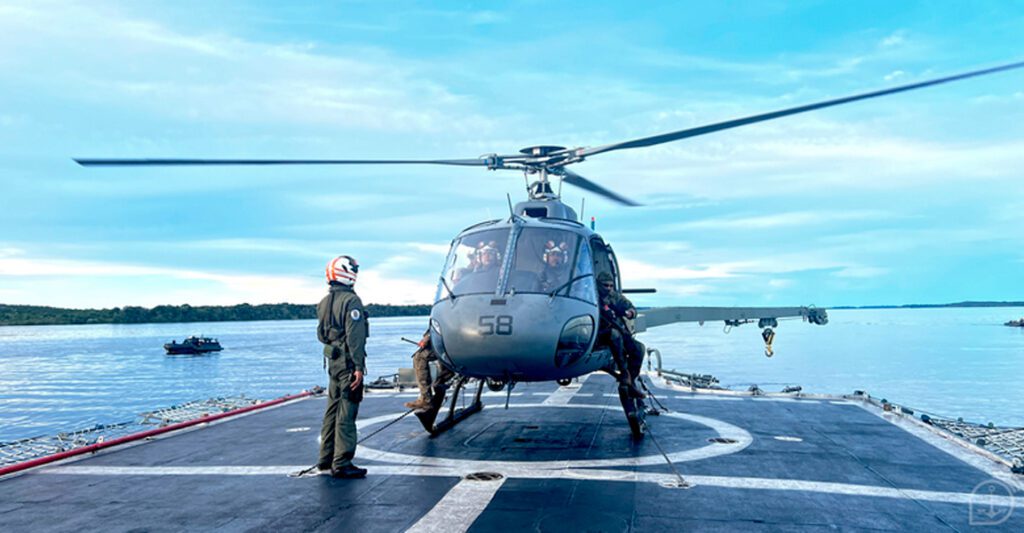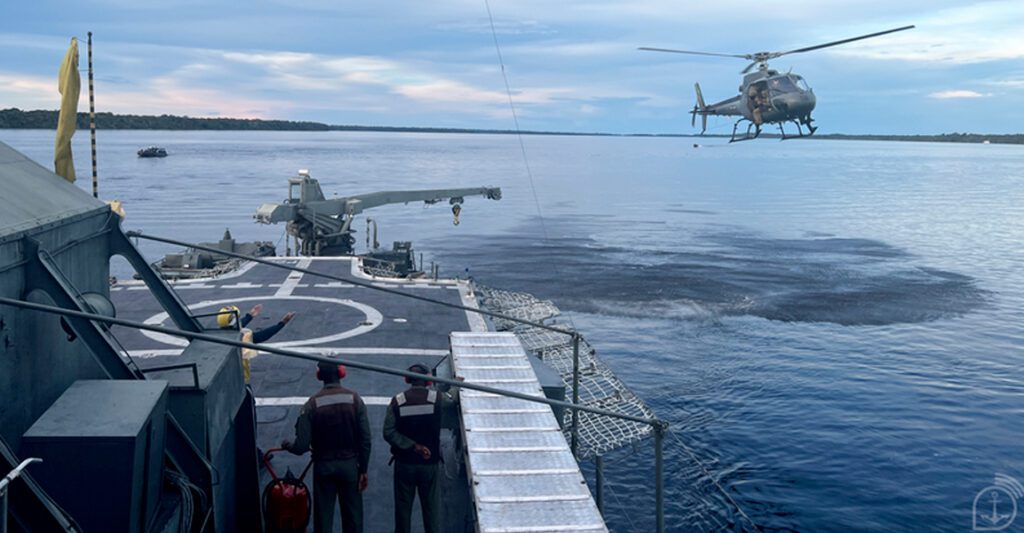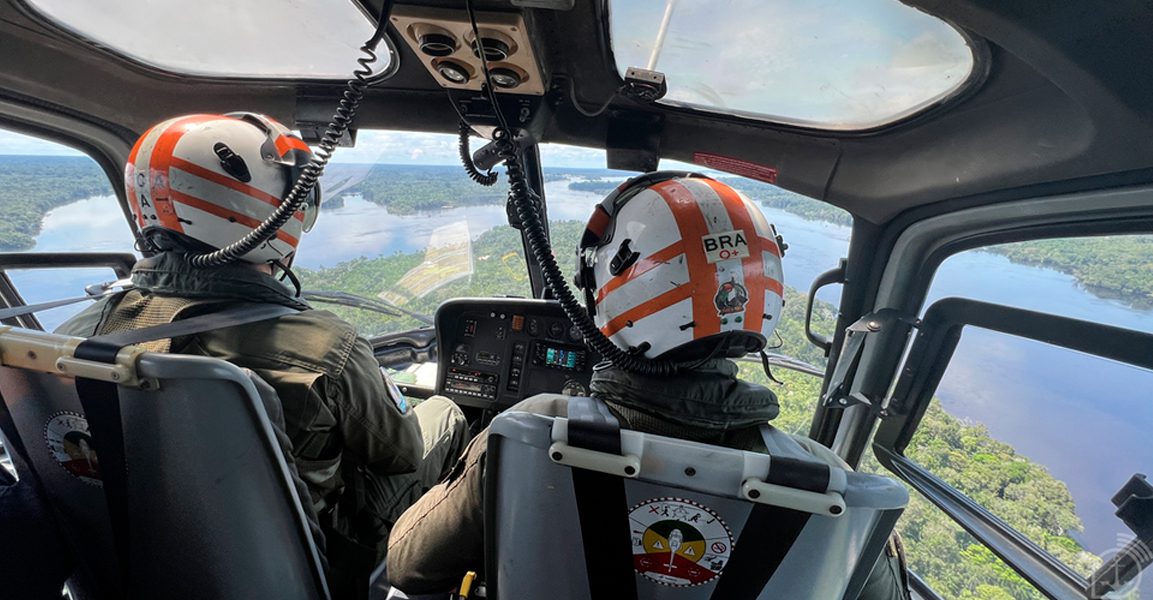Learn about the work of Brazilian Navy aviators in the region
By First Lieutenant (RM2-T) Luciana Almeida – Manaus, AM
The peculiarities of the Amazon region present a series of challenges to the military of the Armed Forces. The immensity of the area, for example, makes the use of aircraft essential to the effectiveness of the actions carried out. Used to flying over the ocean, naval aviators working in the Western Amazon need to know and adapt to the specificities of Amazonian flight.
Reporting to the 9th Naval District Command, the 1st Northwest General Employment Helicopter Squadron (HU-91) is based in Manaus (AM). Its Commander is Frigate Captain, Naval Aviator, Fábio Ricardo Fonseca dos Santos, who has been in the Brazilian Navy (MB) for 28 years, including a year and a half in the Amazonas. He describes some of the advantages of flying over the region. “When we fly over the sea, for example, we have no way of orienting ourselves visually; over the forest, we have the rivers, which are a good source of reference for navigation, and also support points, should an emergency landing be necessary, on a bank where there is a suitable landing area,” he explained.
However, as far as meteorology is concerned, the Naval Aviator explains that the atmosphere of the sea, which is saline, makes weather conditions more predictable. “We are better able to perceive weather variations at sea; in the Amazon rainforest, changes happen very quickly, due to the amount of heat and humidity. So sometimes we have the rapid formation of a fog, like the ones that happen in the morning, near the treetops, called ‘Aru’, formed mainly when it rains the day before,” says Commander Fonseca.

Challenges of flying over the rivers of the Amazon
In addition to the weather, the critical points for air operations in the Amazon are basically the existence of landing sites and logistical support. Commander Fonseca points out that, as it is a very large area of forest, with a low population density, reaching every corner of the Amazon becomes a challenge. “We need support points for refueling. The smaller Esquilo aircraft has a good range, but not enough to reach certain places, such as from Manaus to Tabatinga. In this case, for example, we need to stop halfway to refuel,” he explained.
Another challenge of flying in the Amazon is looking out for wildlife. The issue of avian danger is always a point of alert. While urban areas have a greater presence of vultures, there is a greater variety of animals in the jungle, with different sizes and flight profiles, which requires more attention from pilots. In the event of a collision with a bird, there is a risk of severe damage to the aircraft and its occupants.

Tasks of a Navy aircraft in the Amazon
Operating from ships gives versatility to the various types of operations in the Amazon, where rivers represent important access routes and integration of the territory. “Some of these activities can be rescue, fire support (on-board sniper with the aircraft’s own weapons), assisting a naval patrol with a search or an approach; aeromedical evacuation, if someone has a health problem in a riverside area that is difficult to access; and wherever else is needed,” says the Naval Aviator.
“We can also land in confined spaces, in a ‘clearing’, or in a community that only has a small soccer field, to transport, for example, a public official or a ship’s doctor to a location that is not close to the riverbank,” he added.
Safety first

To ensure a safe flight, on the rivers of the Amazon or anywhere else, Commander Fonseca says that good planning is a must. “We often say that the flight starts with the preparation. We start flying from the moment we look at the weather and plan the navigation in the briefing [a prior meeting before each mission to gather all the necessary information],” he says. For him, “the secret of a safe flight is to be planned, trained and to know the behavior of the rivers and the weather. In addition to the pilots, there is the essential support of the aircraft’s faithful flight mechanic. The team needs to prepare very well before flying, be well attuned, and gather as much information as possible to reach the destination.”
Second Sergeant Ailson Nóbrega de Oliveira, who has been in the Navy for 17 years, six of which have been in the Amazon, also details the peculiarities of flying over the region. “Rain can fall here at any time. That’s why we constantly make precautionary landings. We also have the resource of refueling by drum; since in many places there is no place to refuel, we have to leave drums of fuel on the way in advance. So, the aircraft driver needs to be very versatile and quick to respond to the aircraft’s configuration. But our work is very rewarding. I wouldn’t swap this experience for any other,” he emphasized.
